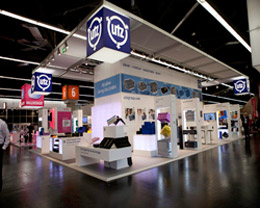Without a doubt more info on living reviews that are systematic
Residing systematic reviews are good quality, up-to-date online summaries of wellness research which can be updated as new research becomes available, in line with the eyesight associated with the pioneering Oxford Database of Perinatal Trials to “include a collection of test overviews, which is updated whenever brand new data become available[13] that is”. You will find four fundamental differences between mainstream SR and residing review that is systematic book structure, work procedures, author group administration, and analytical practices.
The difference that is essential residing systematic review and main-stream SR may be the book format. In place of a old-fashioned fixed SR report or change, residing systematic reviews are dynamic, persistent, online-only proof summaries, that are updated rapidly and sometimes. The corollary of a full time income book is three changes to SR production. First, work procedures should be adjusted. a literary works search strategy is maintained and outputs given constantly into an SR workflow, including continuous updating of identified studies, evaluation of research quality, information removal, meta-analysis, and SR report. As opposed to the extreme, sporadic work of mainstream SRs and SR updates, residing systematic review calls for moderate, ongoing share. 2nd, author team management needs to be attentive to a constant workflow, coordinating work over extended periods of time and enabling development when you look at the writer group, while maintaining institutional memory.
3rd, updating meta-analyses involves a reanalysis of information and, just like repeated analysis of acquiring primary test information, an inflated rate of false-positive findings is probably if analytical tests are duplicated naively [14]. Additionally, effect size quotes are unstable, particularly in the first phases of proof generation [15]. These problems are highly relevant to all updates to meta-analyses, but they are especially very important to residing systematic reviews because of the prospective regularity of updates. Statistical tabs on meta-analyses making use of formal sequential practices can get a grip on the possibility of spurious findings, while achieving pre-specified capacity to recognize a pre-specified clinically relevant magnitude of effect [16],[17]. Sequential methods are controversial in meta-analysis because they are predicated on evaluation in place of estimation, and an estimate this is certainly widely disseminated on such basis as an importance test outcome might be biased. A Bayesian approach provides a natural framework for monitoring accumulating evidence in which prior distributions can be used to reduce the probability of falsely concluding superiority of an intervention in the early stages of the review [18], and to stabilize the meta-analysis by exploiting external information about the likely degree of statistical heterogeneity across the studies [19] as an alternative. Also, a Bayesian framework feeds obviously into choice generating.
Manufacturing of living reviews that are systematic
As well as the three crucial modifications to examine manufacturing described above, an integral enabler of residing systematic review is SR manufacturing effectiveness. Improvements in effectiveness may have profound results on the effective use of wellness technologies. For instance, a decrease that is 4-log the expense of sequencing a individual genome, from US$100 million to US$10,000 over ten years [20], has catalysed a genomics revolution with profound advantages for wellness. On the other hand, increasing expectations that are methodological resulted in an increase in the complexity and expense of SR and manufacturing timelines usually more than 1–2 years [21]. We describe below a few current developments which have the prospective to boost significantly the effectiveness of mainstream SR and enable the extensive creation of residing systematic reviews.
Workflow and Collaboration Tools
Regardless of the option of some particular tools, the efforts of all SR authors are fragmented across generic term processing, spreadsheet, e-mail, guide administration, and analytical analysis tools [22],[23]. This fragmentation hampers the manufacturing and upgrading of SRs, undermines the experience and engagement of SR writers, and limits the option of procedure information. Growing innovation in tools and platforms [22] will enable more efficient SR manufacturing, nevertheless the right incentives and partnerships have to be in place of these innovations to result in broadly available applications [24].
Semi-automation
Text-mining technologies are increasingly being developed to boost the effectiveness of SR production [25]. The most refined techniques are currently concerned with study identification [26] while experimental work encompasses many stages of the review process. Right right Here, device learning technologies have actually the prospective to cut back the manual “screening” of titles and abstracts by as much as 50per cent in brand new reviews [27] and much more than 90% in review updates [28], greatly boosting the effectiveness of review manufacturing. Other initiatives are developing semi-automation technologies to help using the growth of search techniques, evaluation of research quality, removal marriagemindedpeoplemeet of information from papers, and manufacturing of SR protocols and reports.
 Zurück zur Artikelübersicht
Zurück zur Artikelübersicht
















Schreibe einen Kommentar
Du musst angemeldet sein, um einen Kommentar abzugeben.